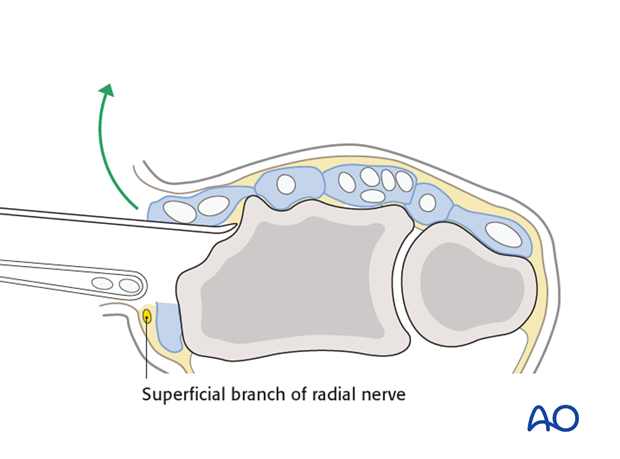Direct approach to the radial styloid
1. Preliminary remark
Dorsal approaches (as illustrated A-D) can be chosen between the different extensor compartments (as illustrated I-VI), as dictated by the specific fracture pattern.
Here an approach between the first and second extensor compartments (A) is described in detail.
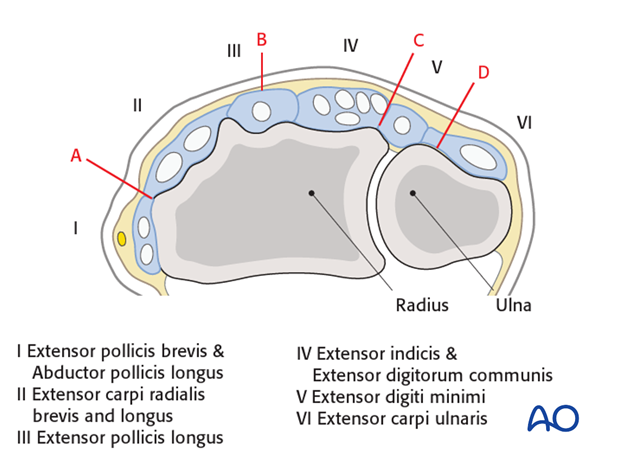
2. Anatomical snuffbox
Extensor pollicis longus (EPL) and Extensor Pollicis Brevis (EPB) are the landmark for anatomical snuffbox, with the tip of the radial styloid forming the floor.

Important structures around the anatomical snuffbox are the superficial branches of the radial nerve, which should be carefully protected during different percutaneous fixation techniques.
The radial artery crosses the floor of the anatomic snuffbox and should be protected as well.
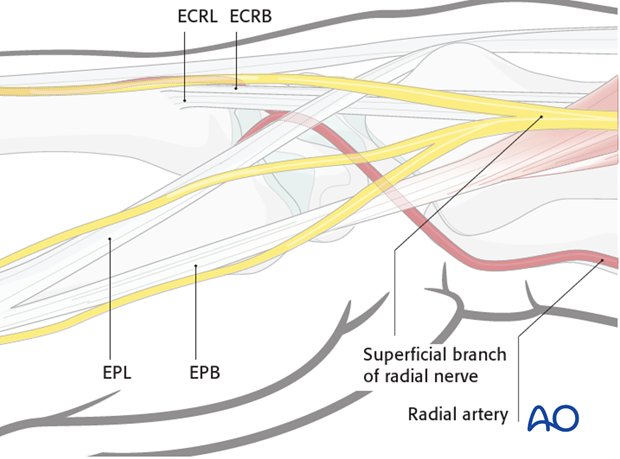
3. Skin incision
A straight incision is made over the anatomical snuffbox, and then extended distally and proximally, to the necessary extent, as illustrated.
The two resultant skin/subcutaneous flaps are raised, by blunt dissection, from the underlying deep fascial and extensor retinaculum.
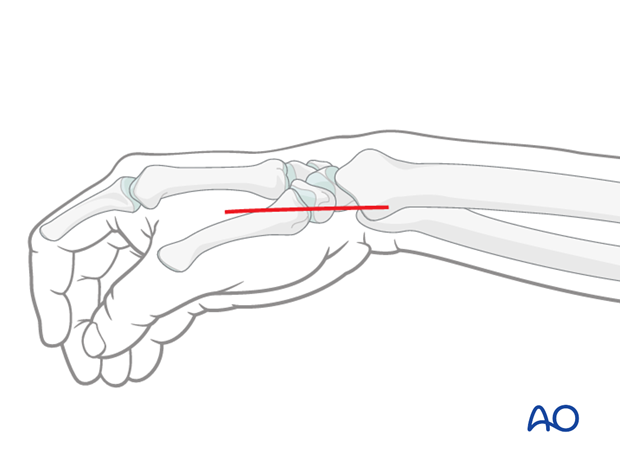
4. Exposure
The superficial cutaneous branch of the radial nerve is identified and protected. The radial styloid is then exposed by sharp dissection.
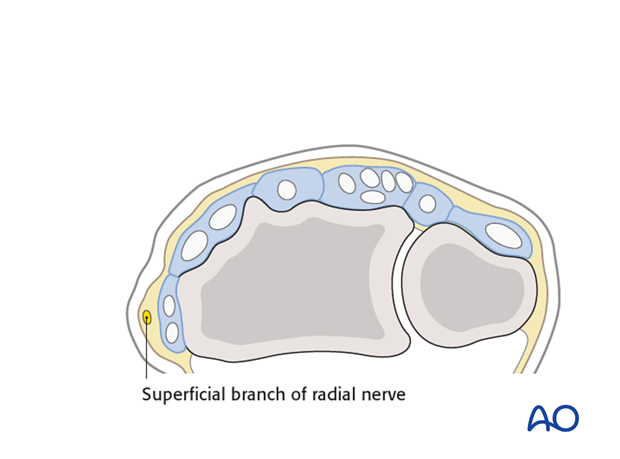
The first and second compartments may be elevated as necessary.
